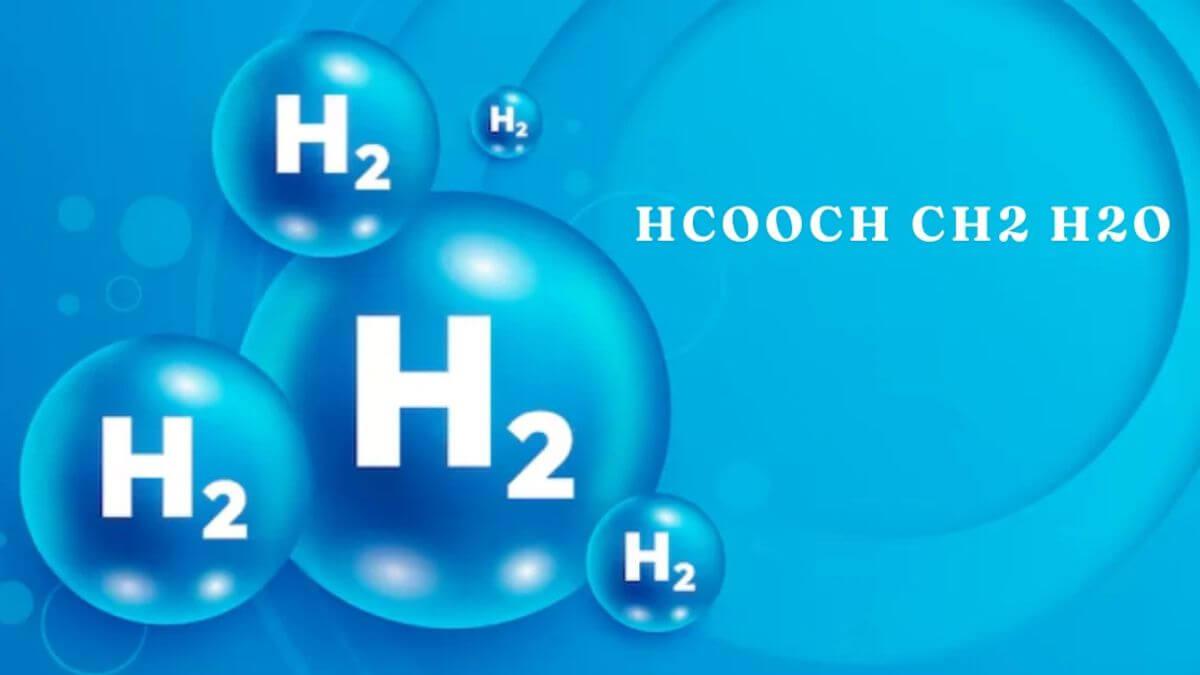Notifications

7 minutes, 5 seconds
-25 Views 0 Comments 0 Likes 0 Reviews

The reaction involving HCOOCH CH2 H2O (formic acid ester and water) is an interesting process in organic chemistry that leads to the formation of various products through hydrolysis. This article will explain the reaction mechanism step by step, as well as the products formed, in a way that is easy to understand for both beginners and experts.
The HCOOCH CH2 H2O reaction refers to the hydrolysis of a formic acid ester (HCOOCH CH2) in the presence of water (H2O). This reaction involves the breaking of an ester bond between the formic acid group and the alcohol group, resulting in the formation of an alcohol and a carboxylic acid. The process is essential in both laboratory and industrial applications.
An ester is a chemical compound formed from an alcohol and a carboxylic acid. In the case of HCOOCH CH2, the ester is formed by the combination of formic acid (HCOOH) and an alcohol called methanol (CH3OH). When water is added, the ester bond is broken in a process called hydrolysis.
Hydrolysis is the process where a molecule is split into two parts by adding water. In the reaction involving HCOOCH CH2 H2O, the ester bond between the formic acid and the alcohol is broken. This leads to the formation of the alcohol (CH3OH) and carboxylic acid (HCOOH) in two simple steps.
Nucleophilic Attack: The water molecule, which is nucleophilic (electron-rich), attacks the electrophilic carbonyl carbon of the ester (HCOOCH CH2).
Breakage of Ester Bond: This attack leads to the breakage of the ester bond, creating a tetrahedral intermediate.
Proton Transfer: After the bond breaks, a proton transfer happens within the intermediate.
Final Products: This results in the production of methanol (CH3OH) and formic acid (HCOOH).
Water plays a crucial role in the hydrolysis of esters like HCOOCH CH2. As a nucleophile, it provides the necessary electrons to break the ester bond. Without water, the ester would not hydrolyze, and the reaction would not proceed.
Several factors can affect the efficiency and speed of the HCOOCH CH2 H2O hydrolysis reaction:
Temperature: Higher temperatures generally speed up the hydrolysis reaction.
Catalysts: Acids or bases can be used as catalysts to accelerate the process.
Concentration of Water: A higher concentration of water leads to faster hydrolysis.
The main products of the HCOOCH CH2 H2O reaction are methanol (CH3OH) and formic acid (HCOOH). These two compounds are the result of the breakdown of the ester in the presence of water.
Methanol (CH3OH): A simple alcohol used in fuel, solvents, and as an industrial feedstock.
Formic Acid (HCOOH): A colorless liquid with a pungent odor, used in the production of various chemicals and in leather tanning.
The hydrolysis of esters like HCOOCH CH2 is important in various industries. In the pharmaceutical industry, ester hydrolysis is used to synthesize active ingredients for drugs. In the food industry, it can be used to break down certain preservatives. Hydrolysis is also essential in biodiesel production, where ester bonds are broken to release fatty acids.
The hydrolysis of HCOOCH CH2 H2O has several industrial applications. For example, formic acid is used as a preservative and in the production of chemicals such as plastics and rubber. Methanol, on the other hand, is a key ingredient in the production of formaldehyde, acetic acid, and other chemicals.
To speed up the HCOOCH CH2 H2O reaction, conditions can be optimized. Using an acidic or basic catalyst can significantly accelerate the hydrolysis process. In industrial settings, high temperatures are often employed to ensure the reaction proceeds more quickly and efficiently.
While hydrolysis of esters like HCOOCH CH2 is relatively straightforward, several challenges may arise:
Reaction Rate: The reaction can be slow at room temperature, requiring heat or catalysts.
Purity of Products: In some cases, the hydrolysis may lead to impurities in the final products if not properly controlled.
Water-Soluble Byproducts: Some byproducts of the hydrolysis can be water-soluble and require additional purification steps.
The HCOOCH CH2 H2O reaction is a fundamental process in organic chemistry that involves the hydrolysis of a formic acid ester. The products of this reaction—methanol and formic acid—are widely used in various industries. Understanding the reaction mechanism and factors that affect the process can help optimize production methods and improve the efficiency of ester hydrolysis in both lab and industrial settings.
By breaking down the reaction into simple steps, we can see how the interaction between water and ester leads to useful products. Whether you're working in a laboratory or in an industrial setting, the hydrolysis of HCOOCH CH2 with H2O plays a vital role in creating important chemicals.

